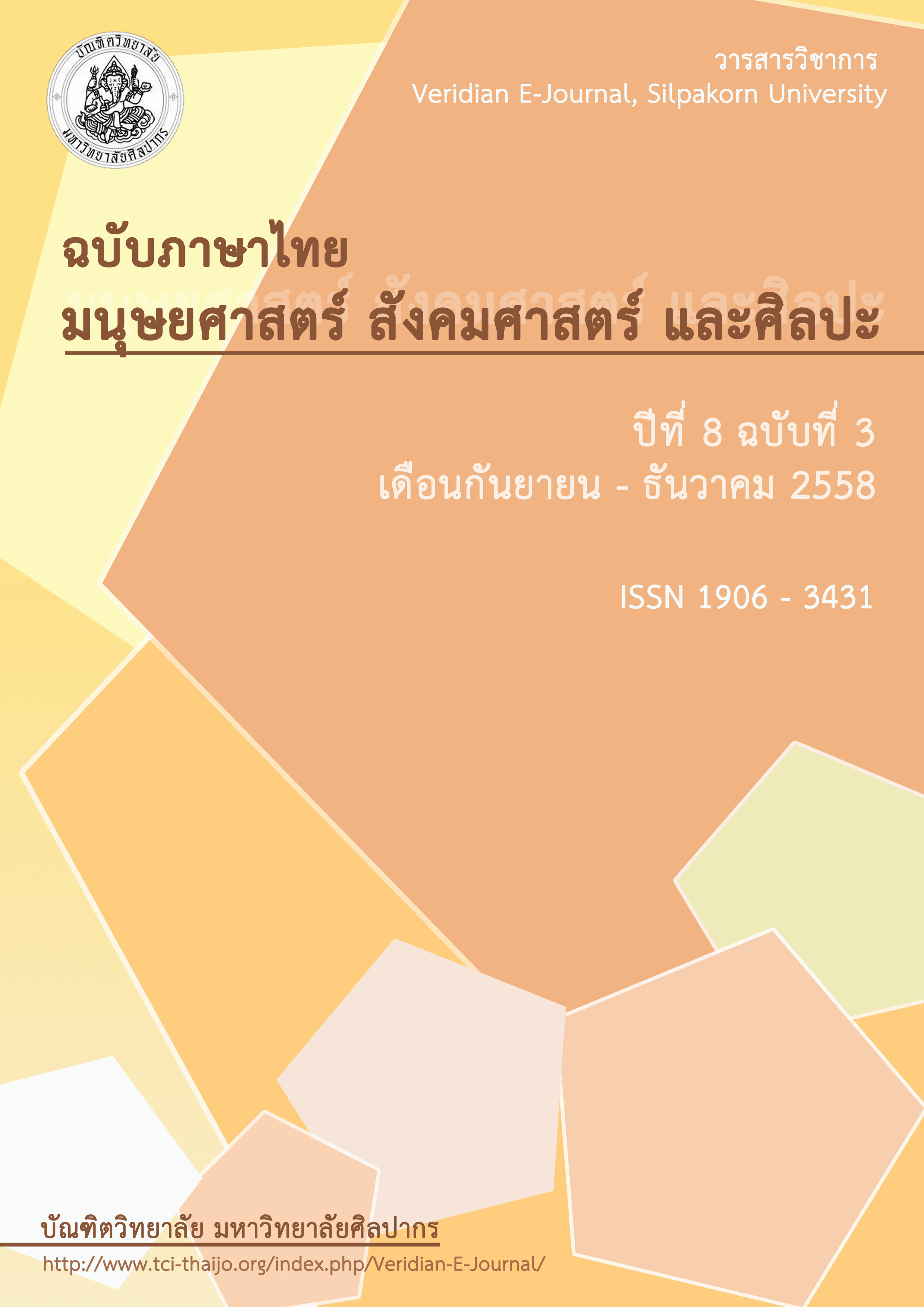พระพิมพ์ดินดิบที่พบในถ้ำบริเวณพื้นที่ลุ่มแม่น้ำตรัง
Main Article Content
Abstract
บทคัดย่อ
จุดประสงค์ของการวิจัยพระพิมพ์ดินดิบที่พบในถ้ำหินปูนบริเวณพื้นที่ลุ่มแม่น้ำตรังมีดังนี้
1. เพื่อศึกษาพระพิมพ์ดินดิบที่พบในถ้ำหินปูนบริเวณพื้นที่ลุ่มแม่น้ำตรัง
2. เพื่อจัดกลุ่มและประเภทพระพิมพ์ดินดิบที่พบในถ้ำหินปูนบริเวณพื้นที่ลุ่มแม่น้ำตรัง
จากการวิจัยได้ผลการศึกษาดังนี้
จากการศึกษาพบว่าสามารถแบ่งพระพิมพ์ดินดิบที่แสดงภาพพระพุทธเจ้าพระโพธิสัตว์ เทพชัมภละ และพระสถูป จำนวนกว่า 850 องค์จากแหล่งโบราณคดีประเภทถ้ำหินปูน จำนวน 5 แหล่ง ออกเป็น 16 รูปแบบ พระพิมพ์ดินดิบเหล่านี้ถูกสร้างขึ้นภายใต้อิทธิพลของศาสนาพุทธฝ่ายมหายานใน 3 ช่วงระยะเวลาได้แก่ พุทธศตวรรษที่ 13, พุทธศตวรรษที่ 14 – 15, และพุทธศตวรรษที่ 17 – 18 พระพิมพ์ดินดิบที่พบในพุทธศตวรรษที่ 13 และ 14 – 15 นั้นได้รับอิทธิพลจากวัฒนธรรมศรีวิชัย ในขณะที่พระพิมพ์ดินดิบที่พบในพุทธศตวรรษที่ 17 – 18 ได้รับอิทธิพลจากวัฒนธรรมลพบุรี การบรรจุพระพิมพ์ในถ้ำหินปูนนั้นเป็นรูปแบบวัฒนธรรมที่พบได้ทั่วไปในคาบสมุทรภาคใต้ของประเทศไทย จากรูปแบบที่คล้ายคลึงกันกับพระพิมพ์ที่พบในวัฒนธรรมทวารวดีในภาคกลางและภาคตะวันออกเฉียงเหนือแสดงให้เห็นถึงความสัมพันธ์ทางการค้าและวัฒนธรรมของชุมชนในบริเวณลุ่มแม่น้ำตรังกับชุมชนในวัฒนธรรมทวารวดี, ศรีวิชัย และลพบุรี
Abstract
The objectives of the research are to study on and analysis of:
1). The clay votive tablets found in the caves of the Trang river basin in Trang Province, Southern Thailand.
2). The types of the clay votive tablets based on the iconographic representation and epigraphical evidence
The findings obtained from the research are as follows:
From 5 cave-sites there are more than 850 votive tablets that can be classified into 16 types according to the iconographic representation. There are image of Buddha, of Bodhisattva, of Jambhala and of stupa. These votive tablets were made by the Mahayana devotees belonging to 3 periods: 8th century, 9th - 10th centuries, and 12th - 13th centuries, respectively. The votive tablet of the first and the second periods were influenced by the Srivijaya culture while those of the third period the Lopburi culture. Tradition of buried clay votive tablets such as this spread in the southern peninsular Thailand. The similarity to the clay votive tablets of the Dvaravati cultures in the Central and Northeastern regions suggests that there were trade and cultural interaction between the communities of the Trang river basin and those of the Srivijaya and Dvaravati and the Lopburi.

